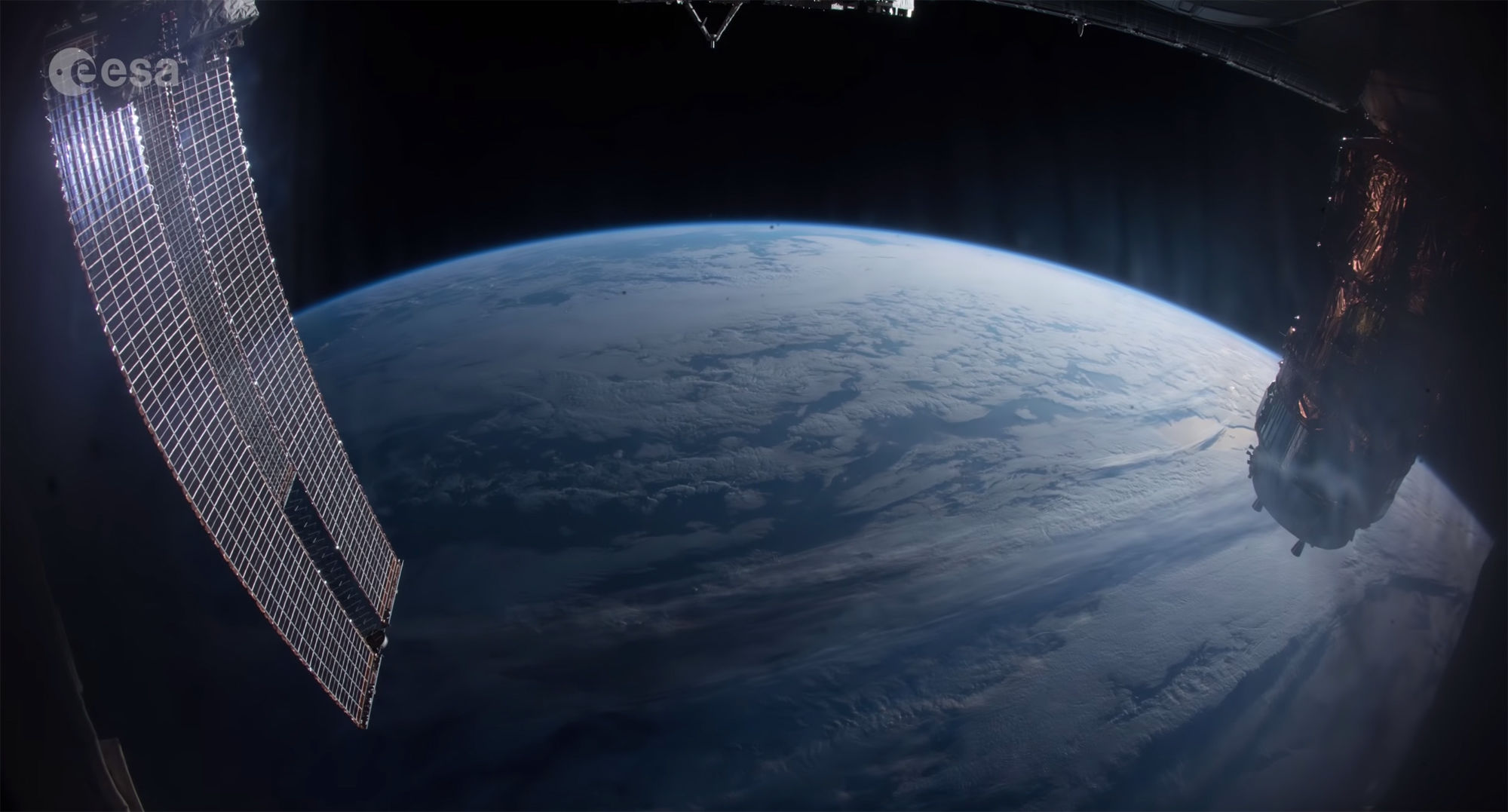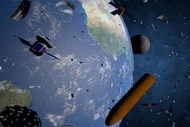Create a free profile to get unlimited access to exclusive videos, sweepstakes, and more!
I'm thankful for a little space. 20 years' worth, in fact.

On November 20, 1998, a Russian Proton-K rocket launched into space, carrying on board the Zarya module… the first part of what would become the International Space Station.
Zarya, incidentally, means "sunrise."
Now, two decades and comfortably over 100,000 orbits later, we have a 100-meter-long fully functioning space laboratory, one that has been continuously crewed for over 18 years.
To celebrate the 20th anniversary of that first launch, the European Space Agency released a lovely time-lapse video showing the view of our home planet from ISS over the course of two complete orbits, taken over about three hours on October 6, 2018. Bonus: it's in 4K, so the detail is really stunning.
A few comments, to enhance the experience…
The animation was made from over 21,000 frames taken by astronaut Alexander Gerst (the ESA lists it as "the longest continual time-lapse from space"; I'll note I spotted a handful of cuts to it, but they're very short and likely due to bad frames, so I'm not going to quibble). The camera uses a wide-angle lens, making the Earth look a lot more curved than it really is. The video unfolds at a rate about a dozen times faster than real life.
Keep glancing at the map at the upper right to see where ISS was at the moment. The map graciously is removed twice in the video to show the Sun rising over the eastern horizon.
Around the 2:00 mark ISS passes over the Pacific, and all gets very dark. Weirdly, it looks like you can see stars rising right through the Earth! You are, but it's not the solid (or liquid) part of the planet: It's the atmosphere. High above the surface is a thin layer of air that glows a bit after sunset. This is a process called airglow, and it's caused by chemiluminescence; some molecules absorb energy from the Sun and slowly release it as light at night. Because the layer is thin, the view from ISS shows it as a curving slice well above the Earth's solid surface, making it look like it is the surface, fooling your eye into thinking the stars are being seen right through the planet.
At around the same time you can see Orion rising through the solar panels, and at 2:20 the bright star Sirius rises over the Earth's limb, too.
Just after 5:00, watch the lower right for sunglint, the reflection of the Sun off of clouds and water, following the ISS as it orbits high above.
You may notice on the second orbit that the ISS passes over a different part of Earth than it did in the first. This is a natural outcome of orbiting the planet. The station is orbiting the center of the Earth at an angle with respect to the Equator (inclined about 51°). At the same time the Earth itself is rotating once per day. So over the roughly 90-minute orbit the Earth has spun about 22° (it makes one 360-degree spin every 24 hours, so 15° per hour), changing the terrain seen below. That's why sometimes from the ground you see the station pass overhead and sometimes you don't. I'll note that in these two orbits, the United States is never seen from ISS, meaning no one in the U.S. could see it, either.
Which makes me wonder: How many people on Earth looked up on the night of October 6 and saw that bright light overhead, increasing and then decreasing in brightness as it passed, wondering what it was, or even better, knowing what it was? There were three humans on that light as it slid across the sky above them…
It's appropriate that this happens around the time of the U.S. holiday Thanksgiving. I have had my issues with the ISS in the past (see this from ten years ago, and this from 2012), especially from a funding viewpoint. However, after having read astronaut Chris Hadfield's book An Astronaut's Guide to Life on Earth, I've changed my mind. One of the key things ISS taught us was how different countries, how different cultures, can come together, figure out how to communicate, and work together on Earth and in space to build the largest orbiting habitat our species has ever seen.
Instead of thinking it as having spent that money on ISS itself, I prefer to think of it as investing in what comes next. This is an early step in a long, long journey. There are many giant leaps to come.














